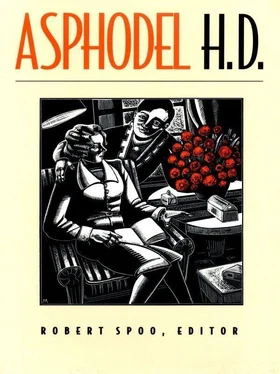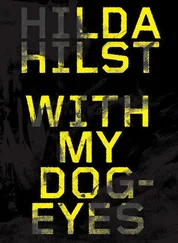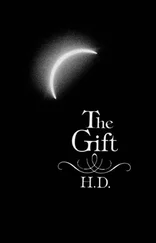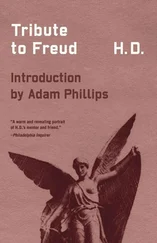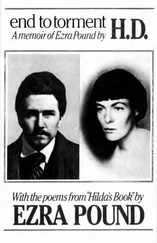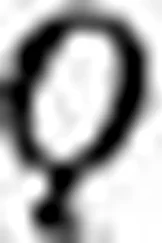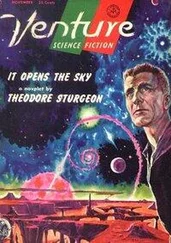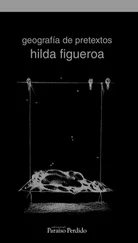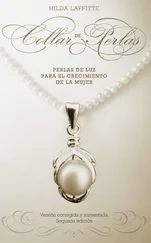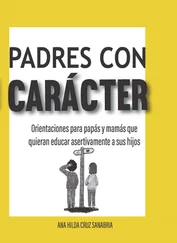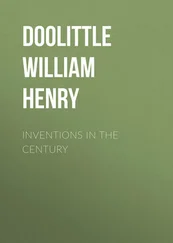Asphodel à clef: Brief Lives of the Persons Behind the Fictions
Like Huxley’s Point Counter Point (1928) and Lawrence’s Aaron’s Rod (1922), Asphodel is in the tradition of the roman à clef, originally an aristocratic subgenre that invited the reader to open aesthetically locked doors with the keys of privileged knowledge and to savor the piquant tension between the invented and the real. H.D.’s circle of friends was especially given to writing in this form, an extension perhaps of their personal politics and intrigues. Aaron’s Rod , for example, contains an unflattering portrait of H.D. as the self-absorbed Julia Cunningham, and other characters in that novel represent Aldington, Cecil Gray, and Dorothy Yorke. In 1926, H.D.’s friend John Cournos published Miranda Masters , a novel about the H.D.-Aldington marriage and the lives that intersected with it; and Frances Gregg and her husband Louis Wilkinson coauthored The Buffoon (1916), a lampoon of John Cowper Powys and other literary figures, including H.D. who is maliciously caricatured as the American Eunice Dinwiddie. It is worth bearing in mind that at the very time H.D. was creating Her and Asphodel with a cast of characters derived from present and former friends, several of those people were likewise busy fictionalizing her.
The following is a list of the characters of Asphodel arranged in alphabetical order; the name of each character is given along with a chapter number indicating his or her first appearance or mention in the novel (“I.I” means part 1, chapter 1). This in turn is followed by a brief biography of the person upon whom the fictional character is based. The list also includes significant figures alluded to or discussed in the novel. These biographical capsules are designed to provide dates, facts, and contexts that will help orient the reader and encourage independent research. I have allowed the events of Asphodel and H.D.’s pre-1920 biography to dictate the kind and amount of information in each entry, telescoping the data accordingly. There is a minimum of overlap among the entries, which are designed to interlock with and illuminate each other.
A few characters in the novel seem to lack clearly identifiable historical counterparts, either because H.D. meant them to be typical (or perhaps composite) rather than referential or because information that might lead to their unmasking has not yet turned up. These characters are omitted here. A few identifications are tentative, and I have indicated this where appropriate.
H.D. herself provided biographical keys to some of her novels: the typescript of Her contains her pencilled list of the characters and their historical counterparts, and she included similar elucidations in letters to Norman Holmes Pearson. I believe that a knowledge of H.D.’s life enhances the experience of reading Asphodel , yet such knowledge does not “explain” the novel or account for its aesthetic strategies; nor should Asphodel be unquestioningly accepted as thinly veiled autobiography, as some biographers have tended to do. However faithful it may be to the events of H.D.’s life between 1911 and 1919, Asphodel is a highly experimental work of fiction created at a certain point in H.D.’s development, with all the clarities and distortions that this vantage on her past may have introduced.
I would like to acknowledge here the generous assistance of Louis H. Silverstein, who provided essential information for many of the following biographies. I also wish to thank Charles Timbrell and Caroline Zilboorg.
Louise Blake (2.3): probably Dorothy (Arabella) Yorke (1891 or 1892–1971), an American who grew up in Philadelphia and as a young woman travelled with her mother to various places in Europe, settling in Paris in 1914. Interested in the arts, she was among H.D’s circle of friends in London during World War I. In 1917 she stayed at H.D. and Aldington’s apartment in Mecklenburgh Square while they were away, later moving to an upstairs room in the same house. An affair developed between Yorke and Aldington when he was home on leave from Officers’ Training Camp after receiving his commission in November 1917. In letters to H.D. from the front, Aldington affirmed his continuing love for her but also said that he desired “l’autre” (Yorke). His relationship with Yorke continued throughout most of the 1920s, after his separation from H.D. Under the name “Arabella Yorke,” Yorke translated Emile Dermenghem’s The Life of Mahomet and Renée Dunan’s The Love Life of Julius Caesar , both published in London in 1930. (For further information, see Richard Aldington and H.D.: The Early Years in Letters , ed. Caroline Zilboorg [Bloomington: Indiana University Press, 1991].)
Mary (Merry) Dalton (1.5): possibly based in part on Brigit Patmore (1882–1965), who was born in Dublin and christened Ethel Elizabeth Morrison-Scott. Her mother’s family had been landowners in Ulster, but Brigit rarely mentioned this fact, preferring to express her love for Ireland in the form of enthusiastic support for Irish independence. In 1907 she married John Deighton Patmore, grandson of the Victorian poet Coventry Patmore, and settled in Putney. A member of London literary circles before World War I, Brigit had met Richard Aldington and may have been his lover before either knew H.D.; the two may have been involved again at some point during the war (when Aldington was married to H.D.), though this is not certain. In the late 1920s Patmore and Aldington formed a relationship that lasted nearly a decade. In addition to two novels published in the 1920s, she wrote a volume of memoirs, My Friends When Young , which her son Derek Patmore edited and published in 1968.
It should be noted that certain aspects of “Merry Dalton” do not seem to correspond to Patmore, even though Merry is an early version of Morgan, the Patmore figure in H.D.’s Bid Me to Live (A Madrigal) (1960). “Lady Delia Prescott” in Asphodel (1.5) may also be based in part on Patmore, inasmuch as Jerrold and Hermione first meet at one of Delia’s parties, just as Aldington and H.D. met at one of Patmore’s.
Jerrold Darrington (1.7): Richard Aldington (1892–1962), born in Hampshire and raised in Dover and its vicinity. With Pound and H.D., he was one of the original Imagist poets and went on to a prolific career in letters. He and H.D. met sometime after her arrival in London in the fall of 1911, finding a common ground in their love of poetry and Greek art and literature. In 1912–1913 Aldington joined H.D. in Italy where she was travelling with her parents; their visit to Capri remained a cherished memory for both. They were married in London in October 1913. Their marriage, which was emotionally and professionally nourishing early on, became strained during the war years, especially after Aldington’s enlistment and his affairs with other women, and they separated in 1919 after the birth of H.D.’s daughter by Cecil Gray. They began to correspond again in 1929. In 1938 H.D. obtained a divorce, as Aldington wanted to marry Netta Patmore, Brigit Patmore’s daughter-in-law.
Phoebe Fayne Darrington (2.13): Frances Perdita Aldington (b. 1919), H.D.’s daughter by Cecil Gray, registered by H.D. as Aldington’s child. In 1928, Perdita was legally adopted by Bryher and her husband Kenneth Macpherson. Married in 1950 to a literary agent, Perdita Schaffner has described her European childhood and her two mothers, H.D. and Bryher, in several delightful memoirs, including “Pandora’s Box,” published in H.D.’s HER-mione (New Directions, 1981). Her family nickname was “Pup.”
Читать дальше
